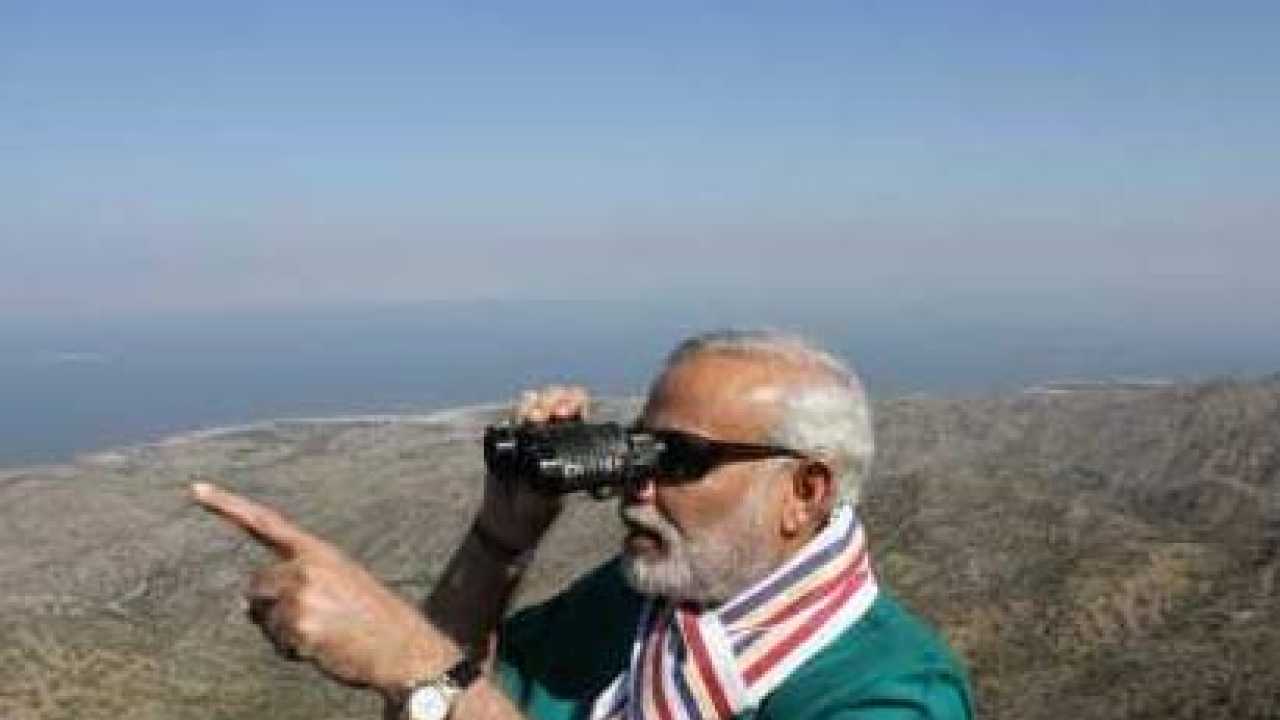
Many in the middle class want the Gujarat Model to be brought to Delhi. Because what we need to finally free us from India’s horrible politicians, is the saviour who has transformed his state.
The miracle that Narendra Modi has performed is, for some reason, not immediately visible on Gujarat’s streets.
Surat, where I was raised, Baroda, where I studied, and Ahmedabad, where I worked, look much the same as I knew them. The same as any other city in India, and if you’ve observed one properly you can describe them all.
The traffic has no discipline, the police whines for chai-pani, public transport is poor, land is encroached with impunity.
There are beggars, there is filth.
Given this vision of the promised land, the followers of Moses would have stayed back in Egypt.
So, and let us be clear about this, life for the middle class is no different for those in Gujarat’s cities than for those in Mumbai, Delhi or Bangalore. In some ways it is inferior and I wrote about that in my last DNA column.
So is there such a thing as a Gujarat model? According to his supporters, yes: Narendra Modi has created a development-oriented, high-growth, corruption-free state. Let us accept all of this is true, there being little point in arguing against generalities, and examine what the model actually consists of.
The unique thing about Gujarat’s economy is its skew against services.
India’s jump into the high growth orbit has come with the domination of services, but Gujarat’s economy is based on growth in industry and manufacturing.
What is India’s GDP mix? It is 59% services and 30% industries, with agriculture being the rest. The difference of the Gujarat Model is apparent here. Gujarat has 46% services and 40% industry. Now Gujarat has always done well in industry (unless Modi’s people want to claim their leader produced Dhirubhai Ambani and JRD Tata). After 1991, when the economy was liberalised, it has done even better in industries.
But despite the advantages Gujarat has not achieved what it could have because it is held back by lack of growth in services. India’s IT and IT-enabled services alone are worth $100 billion, over Rs5 lakh crore, a year which, to put it in perspective, is the size of the entire Gujarat economy. Of the IT and IT enabled services business, Gujarat gets close to nothing. A KPMG report says it got only Rs200 crore a few years ago.
The reason, according to KPMG is that “Gujarat underscores in availability of talent pool,” because of “a lack of engineering institutes” and “lack of proficiency in English”.
Is this an accident? No, it is deliberate. In Gujarat’s government schools, the children of lower middle class and poor Gujarati families are denied English education till Class V. This is because the RSS doesn’t like English. Millions of Gujarati kids, children of servants and drivers and labourers, start to learn the alphabet at age 10. Too late, of course, and so no talent pool. This policy has wasted an entire generation, and denied them access to middle class dreams available to other Indians.
It is not remembered often that in the last eight years, Manmohan Singh has delivered four years (2005-08 and 2010-11) of 9%-plus growth and two years (2004-05 and 2009-10) of 8%-plus growth.
That is also based on a model, just as Modi’s development is based on a model. The question is: Which model does the middle class prefer after knowing the facts?